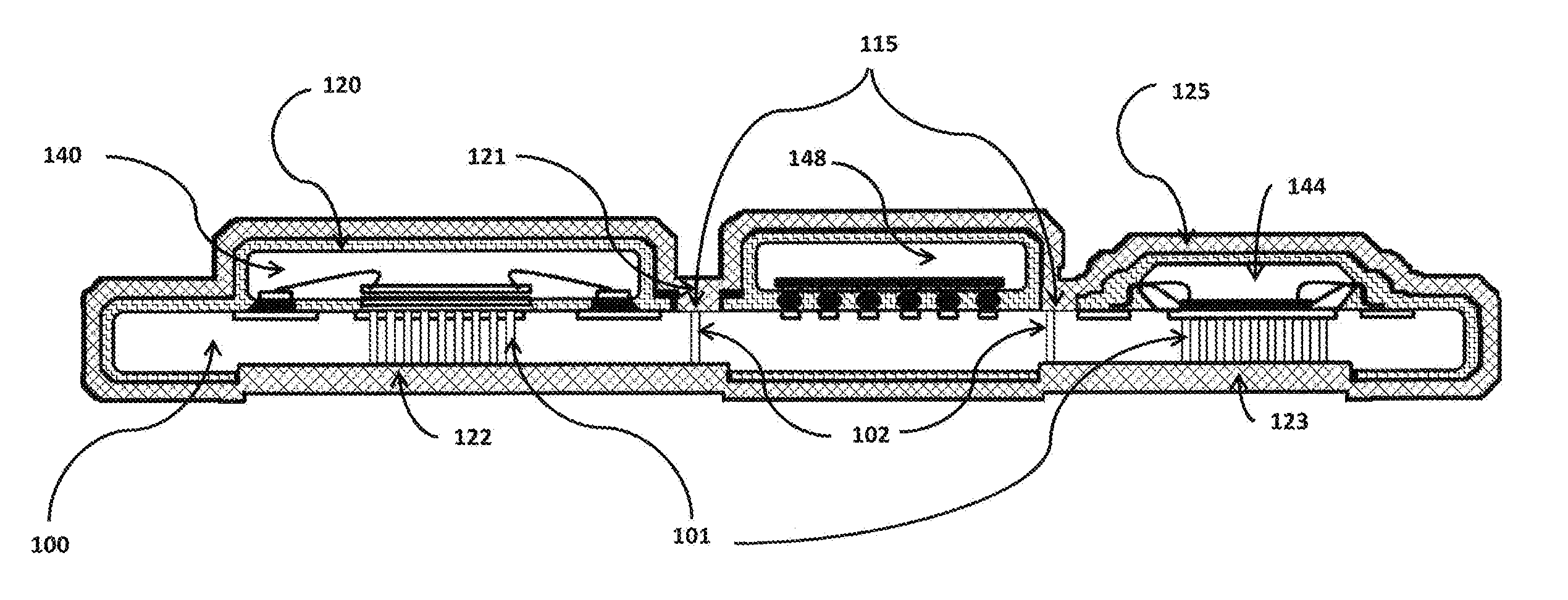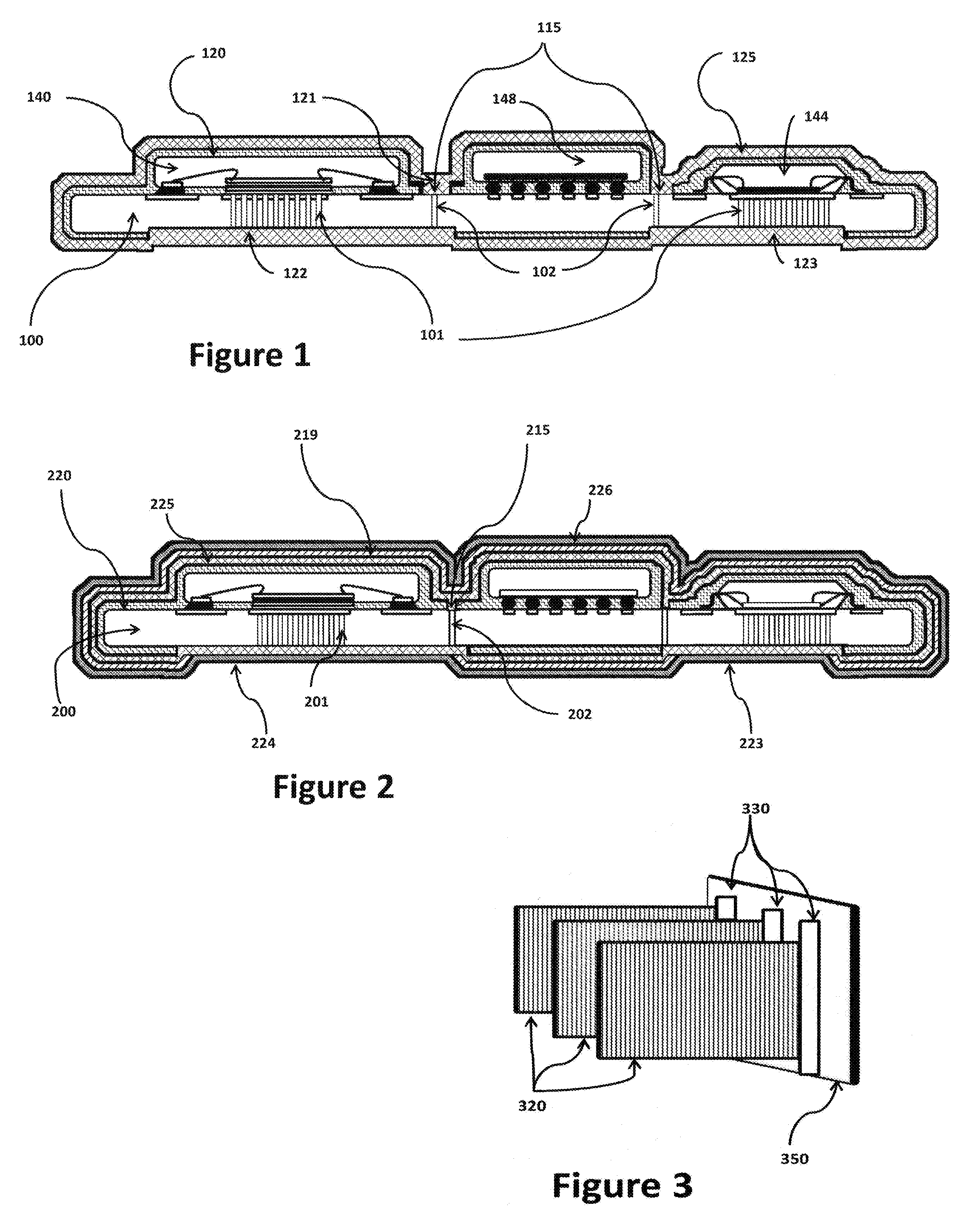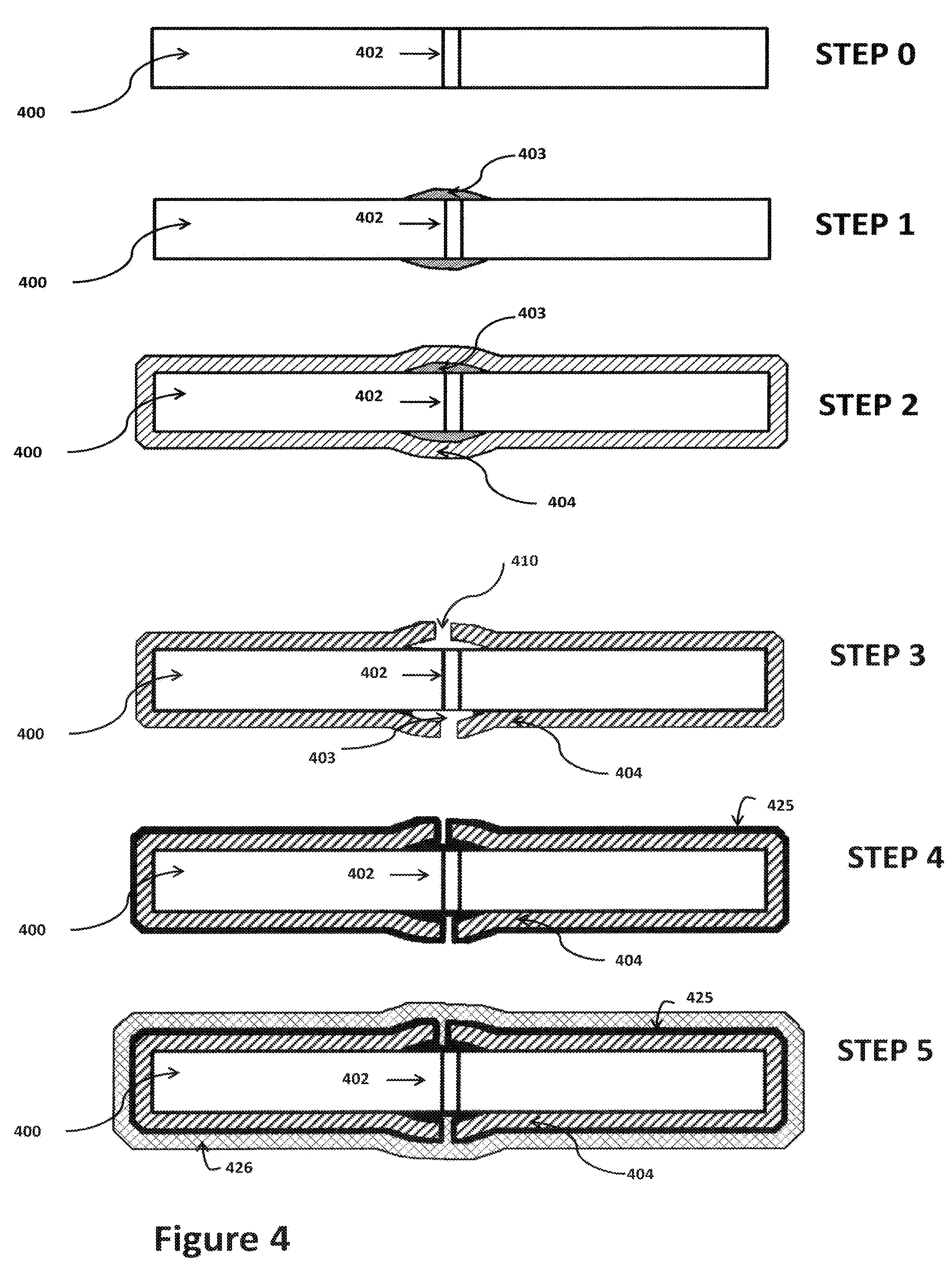Controlled impedance PCB encapsulation
- Summary
- Abstract
- Description
- Claims
- Application Information
AI Technical Summary
Benefits of technology
Problems solved by technology
Method used
Image
Examples
Embodiment Construction
[0021]The invention is described here in terms of preferred embodiments, structures, and method steps, however, it will be understood that substitutions and equivalents as will be apparent to those of ordinary skill in the art may be used without departing from the scope of the invention as defined by the appended claims.
[0022]According to the invention, a device comprised of a printed circuit board (100 in FIG. 1) populated with integrated circuits, has a non-conductive coating layer, 120, formed from a gas-phase deposition process which conformally encapsulates printed circuit board, 100, and all of the integrated circuits in their entirety. To be a gas-phase derived product, the coating process must occur under reduced pressure so that the molecules forming the coating have sufficient diffusion lengths so as to coat beneath surfaces.
[0023]This is typically accomplished using a vacuum. Subsequently, a gas-phase phase derived conductive coating, 125, encapsulates the entirety of th...
PUM
 Login to view more
Login to view more Abstract
Description
Claims
Application Information
 Login to view more
Login to view more - R&D Engineer
- R&D Manager
- IP Professional
- Industry Leading Data Capabilities
- Powerful AI technology
- Patent DNA Extraction
Browse by: Latest US Patents, China's latest patents, Technical Efficacy Thesaurus, Application Domain, Technology Topic.
© 2024 PatSnap. All rights reserved.Legal|Privacy policy|Modern Slavery Act Transparency Statement|Sitemap



